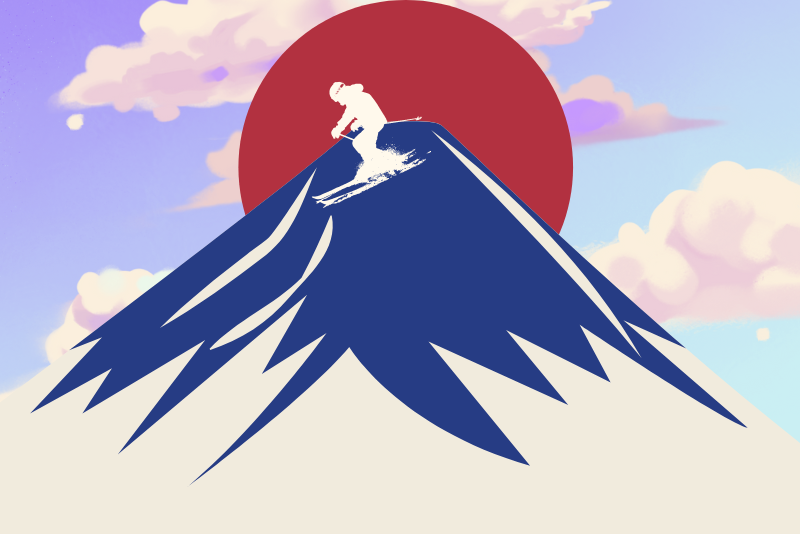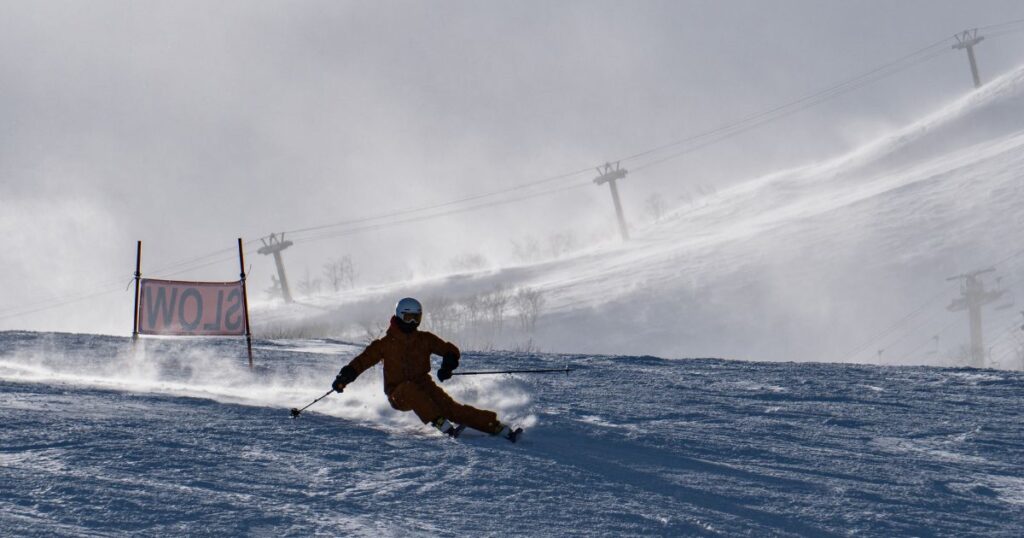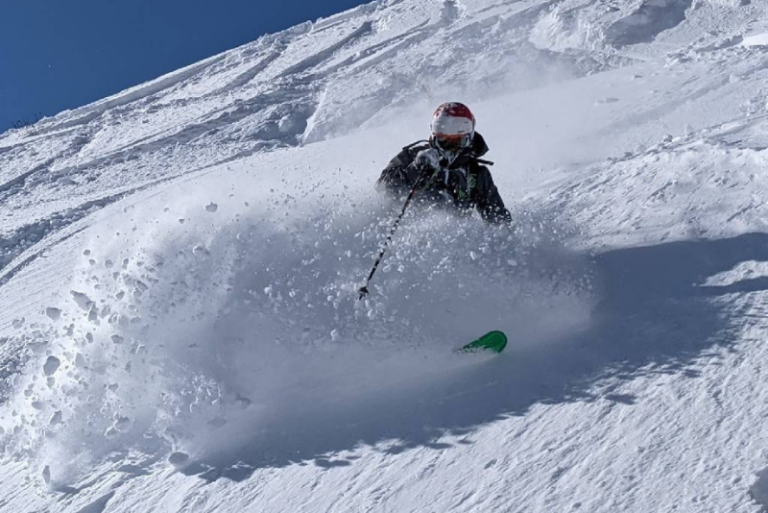The Ultimate Guide to Skiing in Japan: What You Need to Know

Skiing in Japan is far from the typical Western ski experience.
It combines deep, powdery snow, breathtaking landscapes, and legendary Japanese culture.
For North American travelers dreaming of an epic ski adventure, Japan offers an enticing blend of tradition and world-renowned ski resorts.
This ultimate guide will help you plan the ski trip of a lifetime in Japan. Whether you’re a seasoned skier seeking fresh challenges or a first-timer looking to carve your first turns, this guide will steer you through the delights and details of skiing in the Land of the Rising Sun.
From snow monsters to world-class powder tree skiing, Japan is a must-visit destination for any winter sports enthusiast.
In this guide, we’ll cover everything you need to know before hitting the slopes, from when and where to go, what gear to bring, and how to make the most of your ski trip.
Why Skiing in Japan?
Japan skiing is one of the world’s most unforgettable ski destinations. Whether you prefer groomed runs, off-piste adventures, or a mix of both, Japan has it all. Here are some compelling reasons why skiing in Japan should be on your bucket list:

- Powder Snow – Japan is famous for its abundant and high-quality powder snow, also known as “Japow .” With an average snowfall of over 12 meters, you can expect deep, light snow throughout winter.
- Spectacular Landscapes – From majestic peaks to serene forests, Japan’s ski resorts are set amidst stunning natural landscapes. The breathtaking views will make your ski experience even more memorable.
- Unique Culture – Japan is known for its rich culture and traditions, interwoven in every aspect of life. You’ll be able to immerse yourself in this unique culture while skiing in Japan, from trying local cuisine to visiting ancient temples and shrines.
- Onsen – After a long day on the slopes, there’s nothing better than relaxing in Japan’s natural hot springs. Most resorts in Japan have onsens on-site, allowing you to soak your tired muscles while taking in the beautiful scenery.
- Variety of Terrain – With over 500 ski resorts scattered throughout the country, Japan offers a diverse range of terrain for skiers and snowboarders of all levels. From gentle slopes for beginners to challenging backcountry terrain and tree skiing for experts, there’s something for everyone to enjoy.
When to Visit

The Best Time for Powder Hounds
The ski season in Japan typically runs from mid-December to Late April, with peaks varying by region. Mid-January to late February offers the deepest and freshest snow for those eager to experience the most favorable conditions.
Avoiding the Crowds
Consider visiting during the shoulder seasons, either early December or late March, to enjoy fewer crowds and often lower accommodation prices.
Cherry Blossom Skiing
Schedule your trip for a unique experience with cherry blossom season in late March or early April. Skiing beneath the blossoming trees is a rare pleasure that combines the excitement of skiing with the tranquility of Japan’s springtime beauty.
Top Ski Resorts
Japan has over 500 ski resorts scattered across the country, each offering unique charm and terrain. Here are a few of the best Japan ski resorts:
Niseko
Niseko is one of Japan’s most popular ski resorts. It is located on Japan’s northern island of Hokkaido. It boasts an impressive annual snowfall, great variety in terrain, and a vibrant après-ski scene.
Hakuba
Located in the Nagano prefecture, Hakuba is a popular destination for both skiing and snowboarding. Its diverse terrain and proximity to Tokyo make it a convenient choice for travelers.
Nozawa Onsen
Nestled in the northern Japanese Alps, Nozawa Onsen offers a charming traditional village atmosphere and excellent ski conditions. Its hot springs and lively festivals make it popular for skiers and non-skiers.
Shiga Kogen
Known for its stunning views of Mount Fuji, Shiga Kogen is Japan’s largest ski resort, with over 18 interconnected ski areas. It also hosted several events during the 1998 Winter Olympics.
Myoko Kogen
Myoko is home to over 20 ski resorts, making it an excellent choice for those exploring multiple areas. Its long runs and deep powder attract experienced skiers, while its quaint villages offer a taste of traditional Japanese culture.
When considering the best ski resorts in Japan, it’s essential to consider factors such as location, terrain, snowfall, and overall atmosphere. Each resort offers a unique experience, so it’s worth researching to find the perfect fit for your skiing style and preferences.
Planning Your Trip
When planning your trip to Japan, consider hiring a local guide or joining a guided tour. They can offer valuable insights on the best skiing spots and help you navigate the language barrier. It’s also essential to research the weather and snow conditions before booking your trip and budget for lift tickets, rentals, and accommodations.
What to Pack
Be sure to pack appropriately for cold temperatures and changing weather conditions. High-quality winter gear, including waterproof clothing, is essential.
Booking Accommodations
Ski resorts in Japan offer various lodging options, from luxurious hotels to cozy traditional Japanese inns (ryokan). Many visitors also choose to book accommodations with onsen facilities for an immersive experience in Japanese culture.
Booking Ski Lessons and Guides
For beginners or those unfamiliar with the terrain, booking ski or snowboard lessons with an English-speaking instructor can significantly improve your experience and safety on the slopes. Advanced skiers may also consider hiring a local guide to access the best backcountry and out-of-bounds areas.
Lift Passes and Rentals
Purchase your lift pass in advance to save time and money. Rental equipment is available at all major ski resorts, with options for all skill levels. Make sure to specify the type of terrain you plan to ski and your preferred style (powder versus groomed, for example) when selecting your equipment.
Off-Piste Adventures
Japan’s varied terrain and abundant snowfall make it a prime destination for off-piste skiing and backcountry tours. Some resorts, such as Niseko and Hakuba, offer guided tours to explore beyond the groomed runs. Hakuba is a renowned backcountry destination and hosts the Freeride World Tour.
Transportation
Navigating Japan’s ski regions can require several modes of transportation. Depending on your destination, you may need to take a combination of trains, buses, or rental cars. The Japan Rail Pass is an affordable and efficient option for those planning to visit multiple regions and want to use the bullet train.
Après-ski Fun
After a day on the slopes, unwind with some of Japan’s unique après-ski activities. Relax in a traditional hot spring bath, or try snowmobiling or dog sledding. And, of course, don’t forget to sample some delicious Japanese cuisine.
Ski Insurance
Ensure you have appropriate travel and health insurance that covers skiing-related incidents.
Staying Safe on the Mountain
Wear a helmet and carry a trail map, a charged mobile phone, and an emergency contact card. Always ski within your abilities and heed avalanche warnings if venturing into backcountry areas. We recommend purchasing ski travel insurance to cover any unforeseen incidents.
Tips for First-Time Skiers in Japan
If it’s your first time skiing in Japan, here are a few tips to keep in mind:
- Pack plenty of warm layers – temperatures can drop significantly in the mountains.
- Be aware of cultural differences and follow resort rules, such as removing shoes before entering buildings and respecting quiet zones.
- Don’t be afraid to try traditional Japanese dishes at the ski resorts – they are often delicious and a great way to experience the local culture.
- Consider taking a lesson or joining a beginner’s group to learn proper skiing techniques for the unique snow conditions in Japan.
- Take advantage of the onsen (hot spring) facilities at many resorts – they are a great way to relax and rejuvenate after a day on the slopes.
Language and Cultural Considerations
While English is spoken in the larger ski resorts, learning a few basic Japanese phrases to enhance your experience is helpful. Familiarizing yourself with local customs, such as onsen etiquette and the art of bowing, is also recommended.
Cultural Experiences
Take the time to explore the local towns and immerse yourself in Japanese culture. Visit historic sites, attend a traditional tea ceremony, participate in a sake tasting, or stroll through the streets, taking in the sights and sounds of daily life.
Winter Festivals and Events
If your visit coincides with one of the many winter festivals, don’t miss the opportunity to witness the festivities. These events often showcase traditional performances, local food specialties, and impressive snow and ice sculptures.
Side Trips and Day Excursions
Consider adding a day trip to your itinerary to enrich your Japanese experience further. From visiting the snow monkeys of Jigokudani to exploring the culinary capital of Sapporo, the possibilities for adventure are endless.
Book Your Japan Ski Trip
LET OUR EXPERTS HANDLE YOUR JAPAN SKI ADVENTURE
Conclusion
Skiing in Japan is an experience that blends exhilaration with tranquility and challenge with indulgence. Whether you’re captivated by the allure of ‘Japow,’ the promise of cultural immersion, or simply the desire to tackle new slopes, Japan’s ski offerings are as diverse as they are world-class.
This all-encompassing guide has equipped you with the knowledge to plan a memorable and fulfilling ski trip in Japan. Now, take what you’ve learned, prepare your gear, and prepare to make tracks in the incomparable winter wonderland of Japan. Your adventure awaits!
FAQ
Does Japan have good skiing?
Yes, Japan has some of the best skiing in the world, with its abundance of powder snow and diverse terrain options. It is particularly well-known for its high-quality and consistent snowfall, making it a popular destination for skiers and snowboarders from around the globe. So, Japan is worth considering if you’re looking for a top-notch ski experience.
What is the best month to ski in Japan?
The best month to ski in Japan is typically between December and March. However, the peak season for skiing in Japan varies depending on your chosen region and resort. For example, Hokkaido’s primary ski season starts in late November, while Honshu’s primary ski season runs from mid-December to early April.
Is it expensive to ski in Japan?
Skiing in Japan can be affordable or expensive, depending on your budget and preferences. Lift tickets and rentals at some resorts can be more costly than others, and accommodation costs can also vary depending on the location and level of luxury you choose. However, there are options for budget-friendly skiing in Japan, such as staying at smaller local resorts or booking package deals that include lift tickets and accommodation.
Which Japanese ski resort is best for foreigners?
Many ski resorts in Japan cater to foreigners, offering English-speaking staff, signage, and services. Some popular options include Niseko village in Hokkaido, which has a sizeable international community; Hakuba in Nagano Prefecture, known for its varied terrain and lively atmosphere; and Nozawa Onsen in Nagano Prefecture, a charming traditional village with a range of accommodation options. Ultimately, the best resort for foreigners will depend on personal preferences and what individuals seek in their ski experience.

